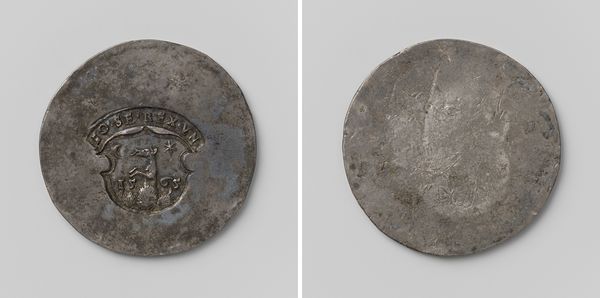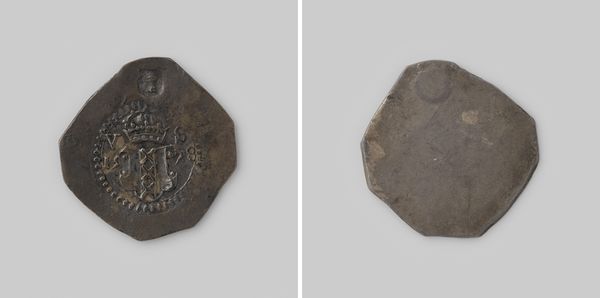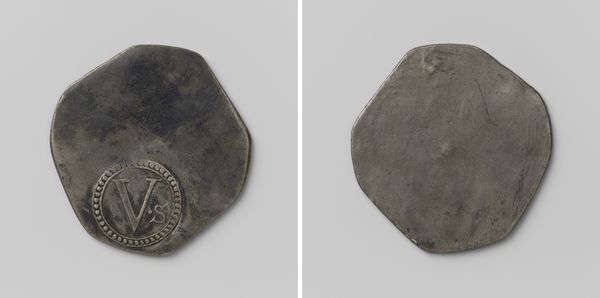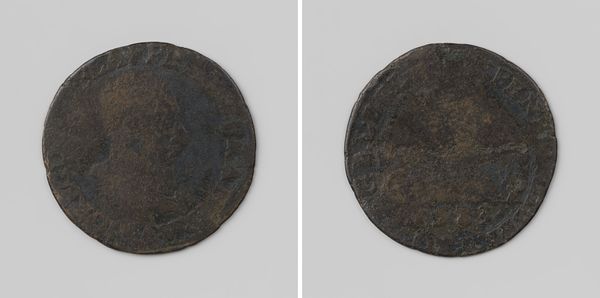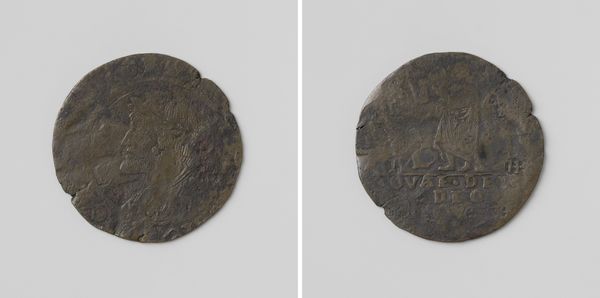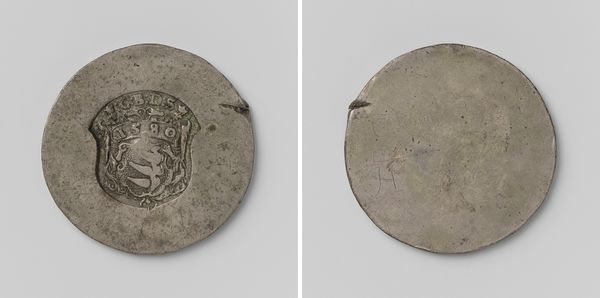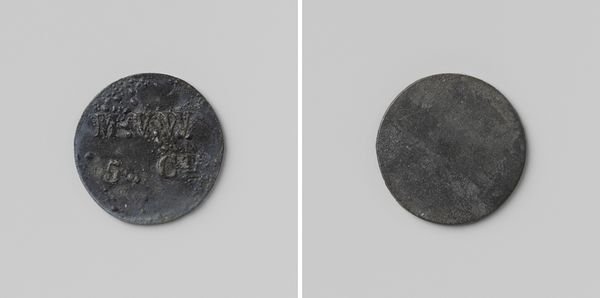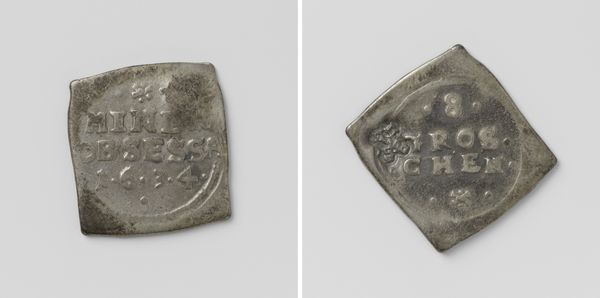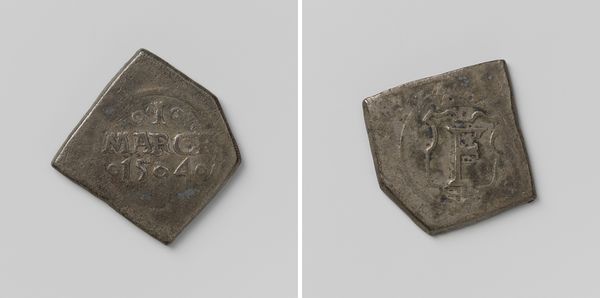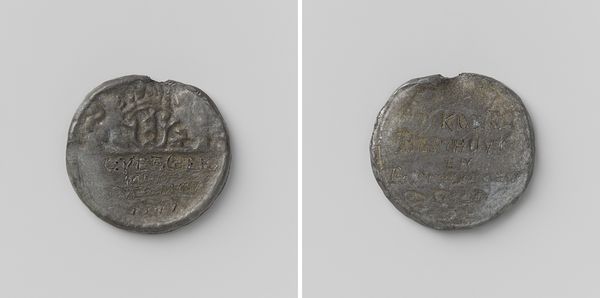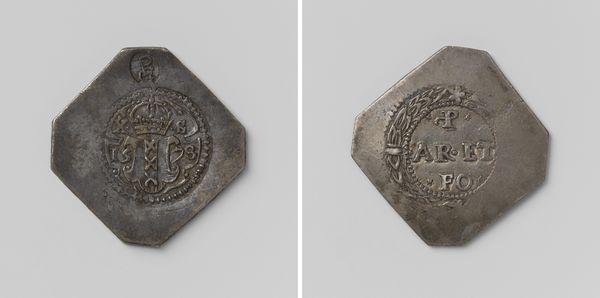
Taler, noodmunt voor het leger van Johan II Sigismund Zápolya, troonpretedent van Hongarije en prins van Transsylvanië, in oorlog tegen keizer Ferdinand I. 1562
0:00
0:00
print, metal, engraving
# print
#
metal
#
11_renaissance
#
engraving
Dimensions: diameter 4 cm, weight 28.88 gr
Copyright: Rijks Museum: Open Domain
Curator: Here we have a “Taler, noodmunt voor het leger van Johan II Sigismund Zàpolya” dating back to 1562. It's a print made on metal, and functions as an engraved object of record. Editor: The patina is heavy; I’m immediately struck by the weight of history it seems to carry, both literally and figuratively. The distressed surface speaks to a time of unrest and conflict. Curator: Precisely. The term "noodmunt" translates to "emergency money" or "necessity coinage," used by the army of Johan II Sigismund Zàpolya, who was a pretender to the throne of Hungary and Prince of Transylvania during his war against Emperor Ferdinand I. The central design is a coat-of-arms bearing symbols of sovereignty and defiance, asserting Zàpolya's claim. Editor: It is an act of resistance cast in metal. By creating and distributing their own currency, Zàpolya was not only financing his army but also visually legitimizing his rule. These symbols--the crescent, star, the family name--all become charged in a moment of social upheaval, marking allegiances for his troops and subjects. Curator: Beyond the heraldic symbolism, notice how the image speaks to the universal experience of conflict and resilience. Currency has always been a tool for both commerce and communication, embodying power structures. Editor: Absolutely. What strikes me is how immediate this feels, even now. Currency often outlives its issuer. To hold it connects us viscerally to their struggle, bringing awareness to a specific history while echoing more extensive conflicts that continue to shape our world. Curator: Considering the religious and political battles of the era, this small object encapsulates enormous ambition and determination. A single emblem, etched on a bit of metal, echoes through time. Editor: It also invites consideration of who controls resources and narrative—who gets to define “legitimacy,” and at what cost.
Comments
No comments
Be the first to comment and join the conversation on the ultimate creative platform.
